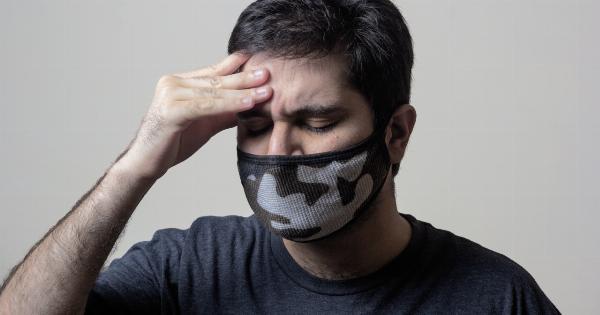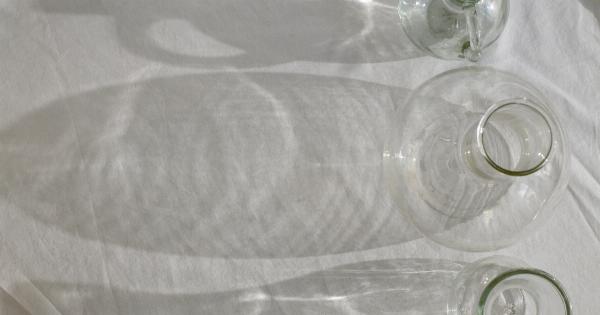Having a cottage is a dream come true for many, as it provides a peaceful escape from the hustle and bustle of everyday life. However, when spending time at your cottage, it’s important to be aware of potential musculoskeletal risks.
Musculoskeletal disorders, also known as MSDs, are conditions that affect the muscles, bones, tendons, ligaments, and other supporting structures of the body. In this article, we will discuss various ways to stay safe from musculoskeletal risks while enjoying your time at the cottage.
1. Furniture and Ergonomics
The furniture you choose for your cottage can play a significant role in preventing musculoskeletal problems. Opt for ergonomic furniture that supports good posture and provides adequate back and neck support.
Avoid furniture that is too low or too high, as it can strain your joints and muscles. Additionally, consider investing in adjustable chairs and tables to accommodate different heights and body types.
2. Lifting and Carrying Heavy Objects
Many cottage activities involve lifting and carrying heavy objects such as firewood, supplies, and furniture. It’s crucial to use proper lifting techniques to avoid putting unnecessary strain on your back and other joints.
Remember to bend your knees and lift with your legs rather than your back. If an object is too heavy to lift on your own, seek assistance from others to avoid potential injuries.
3. Outdoor Activities and Sports
Outdoor activities and sports are a common part of cottage life. However, participating in these activities without proper warm-up exercises and techniques can lead to musculoskeletal injuries.
Always warm up before engaging in any physical activity and use appropriate protective gear such as helmets, knee pads, and wrist guards. If you are unsure about the correct form or technique, consider taking lessons or seeking guidance from experts.
4. Proper Posture and Body Mechanics
Practicing good posture and body mechanics can significantly reduce the risk of musculoskeletal problems. Whether you are sitting, standing, or performing any task, make sure to maintain proper alignment of your spine and avoid slouching or hunching.
When bending or reaching, use your legs and avoid excessive twisting or bending at the waist. Being mindful of your posture and body mechanics can go a long way in preventing unnecessary strain on your musculoskeletal system.
5. Taking Breaks and Stretching
Regardless of the activities you engage in at your cottage, it’s important to take regular breaks and incorporate stretching exercises into your routine.
Prolonged periods of sitting, standing, or engaging in repetitive tasks can contribute to musculoskeletal strain. Set reminders to take short breaks every hour to stretch and change positions. Stretching can help improve flexibility, reduce muscle tension, and prevent musculoskeletal imbalances.
6. Creating an Ergonomic Workspace
If you work remotely or plan to handle any office tasks at your cottage, it’s essential to create an ergonomic workspace. Ensure that your desk and chair are at the correct height to promote an optimal posture.
Place your computer monitor at eye level to avoid straining your neck and use a keyboard and mouse that provide proper wrist support. Designing an ergonomic workspace can help prevent neck, back, and wrist problems associated with prolonged computer use.
7. Maintaining a Healthy Lifestyle
Adopting a healthy lifestyle can protect your musculoskeletal system and overall well-being. Incorporate regular exercise into your routine, including activities that promote flexibility, strength, and cardiovascular health.
Eating a balanced diet rich in nutrients can support bone and muscle health. Additionally, maintaining a healthy weight can reduce the strain on your joints and minimize the risk of developing musculoskeletal issues.
8. Staying Hydrated
Dehydration can adversely affect your musculoskeletal system by causing muscle cramps and stiffness. Whether you are engaging in physical activities or simply relaxing at the cottage, ensure that you consume an adequate amount of water to stay hydrated.
Avoid excessive alcohol consumption, as it can contribute to dehydration and impair your judgment, leading to potential musculoskeletal injuries.
9. Using Proper Tools and Equipment
When working on various cottage projects, it’s crucial to use the appropriate tools and equipment designed for the task at hand. Avoid using makeshift tools or outdated equipment that may increase the risk of accidents or injuries.
Ensure that tools are in good working condition, wear protective gear when necessary, and follow the manufacturer’s instructions for safe usage. Investing in quality tools and equipment can help prevent musculoskeletal hazards.
10. Regular Maintenance and Safety Checks
Periodically inspect your cottage and its surroundings for any potential hazards that may pose a musculoskeletal risk. Clear pathways of debris or obstacles that could cause trips or falls.
Maintain adequate lighting in and around your cottage to prevent accidents. Regularly check for any signs of wear or damage in furniture, stairs, flooring, and other areas that may contribute to musculoskeletal injuries. Promptly address any issues to ensure a safe environment for everyone.
Conclusion
By implementing these tips, you can enjoy your time at the cottage while minimizing the risk of musculoskeletal problems. Remember to prioritize ergonomics, practice proper body mechanics, and take breaks to stretch and rest.
Stay active, maintain a healthy lifestyle, and remain aware of potential hazards around your cottage. With a proactive approach towards preventing musculoskeletal risks, you can fully embrace the tranquility and beauty of your cottage getaway while protecting your musculoskeletal health.































